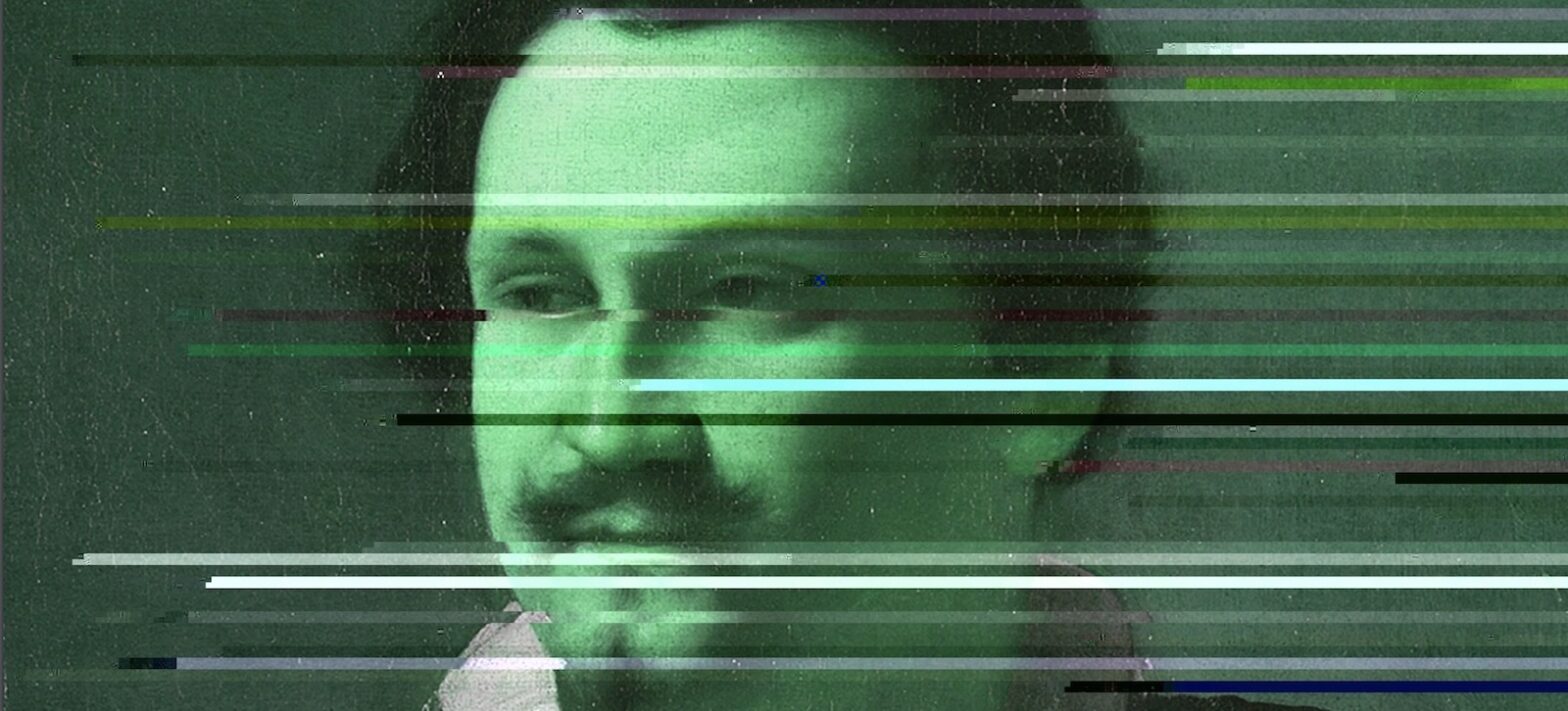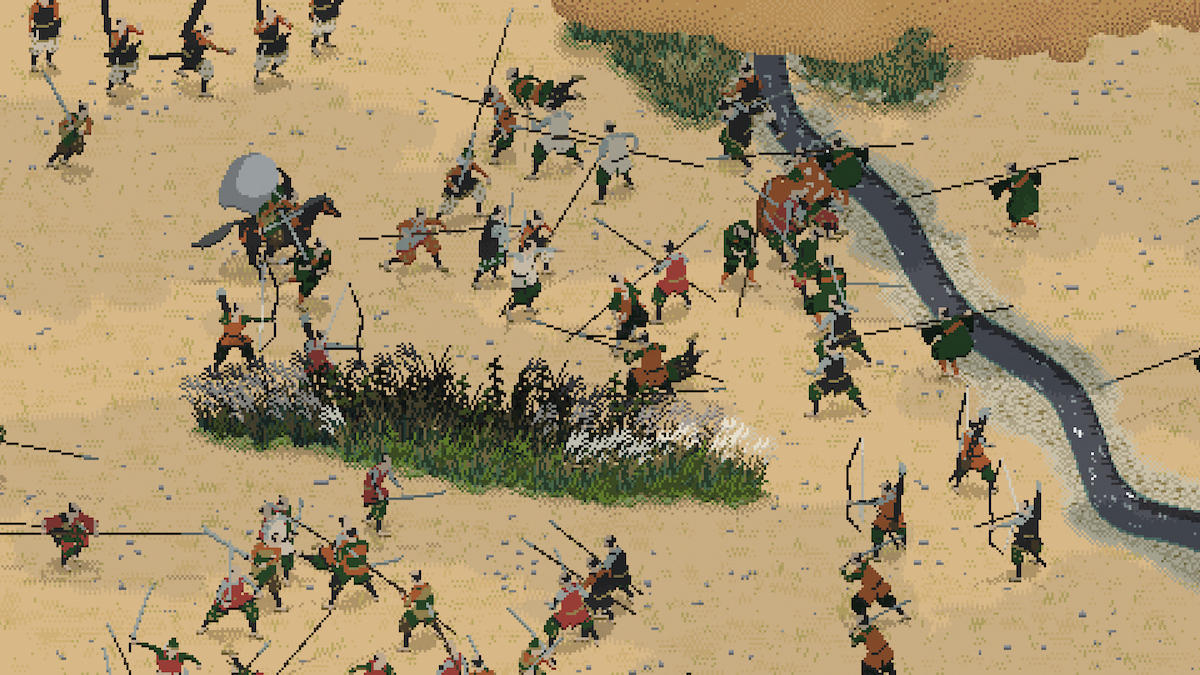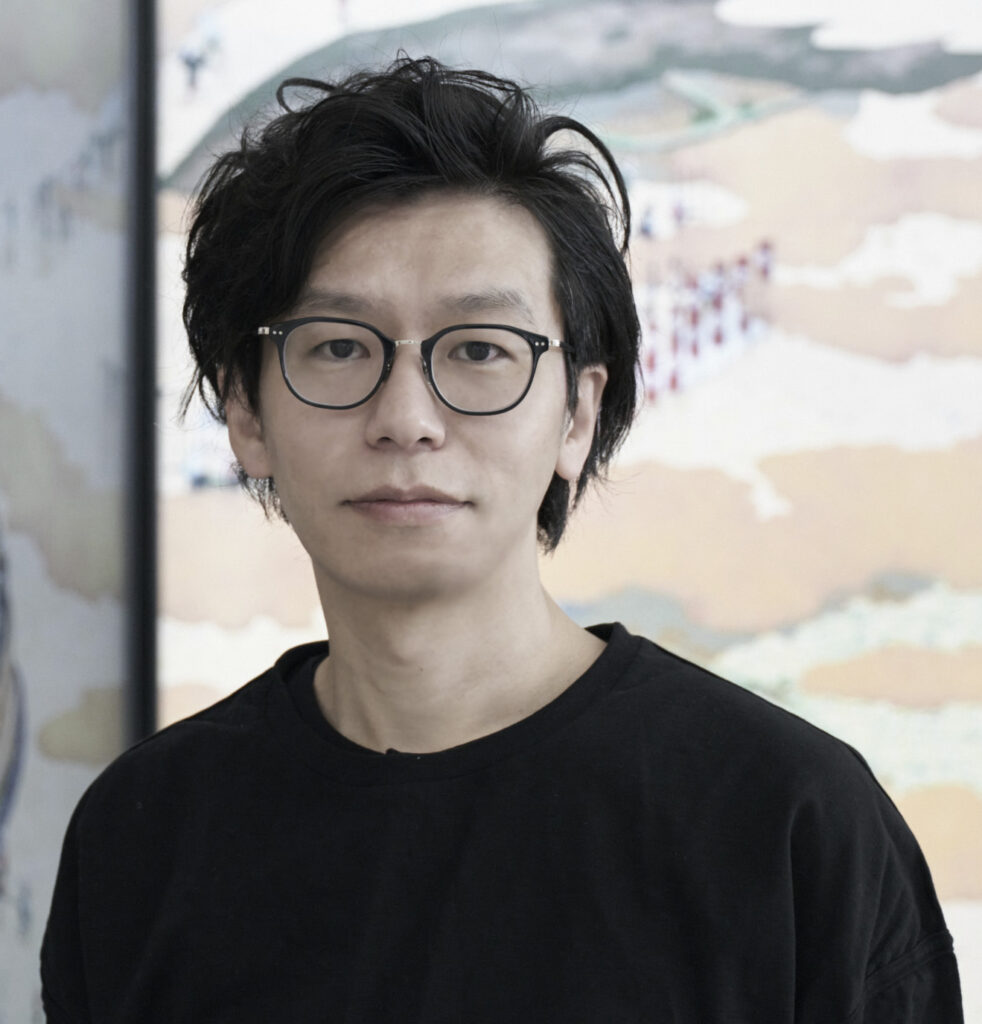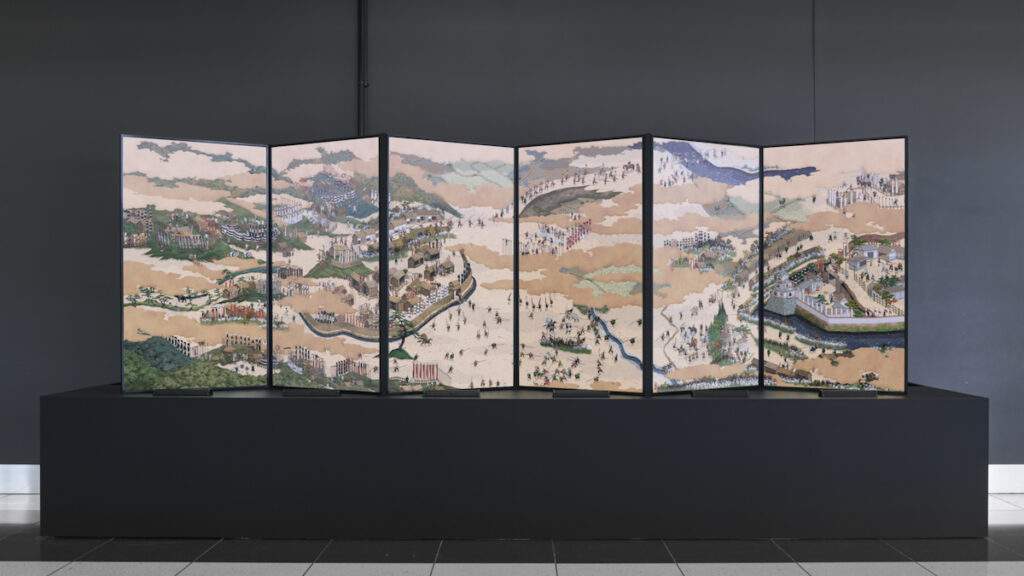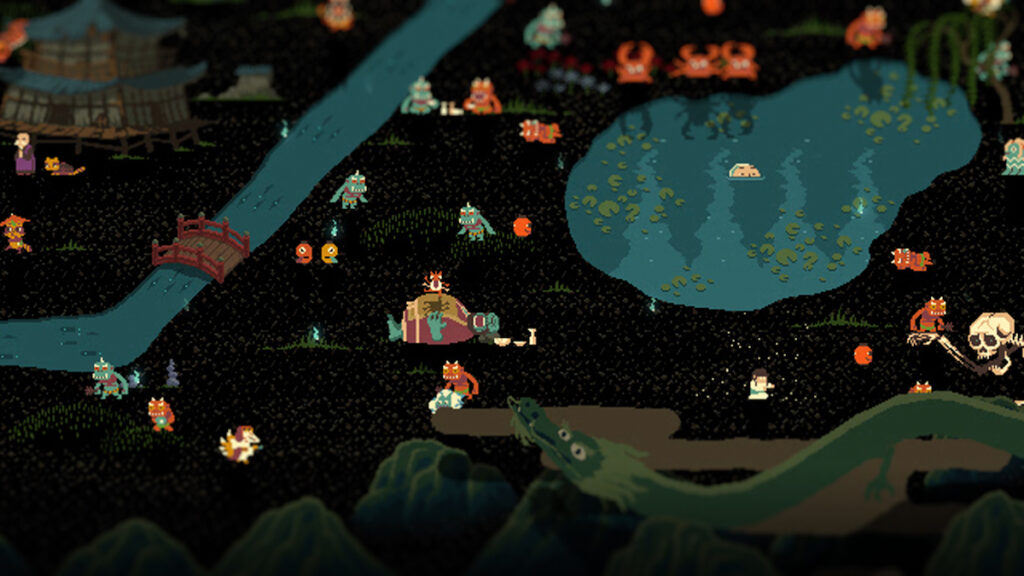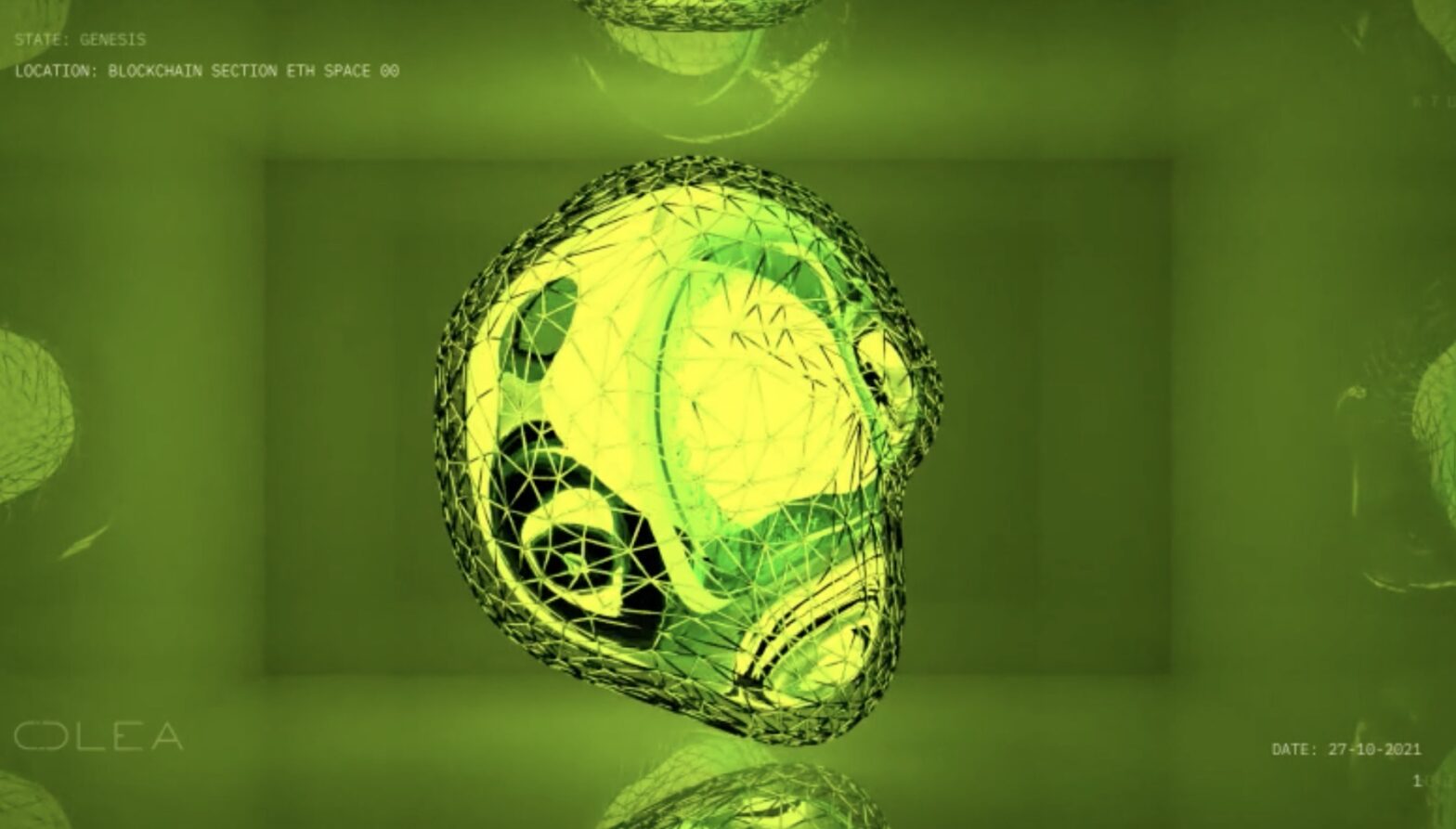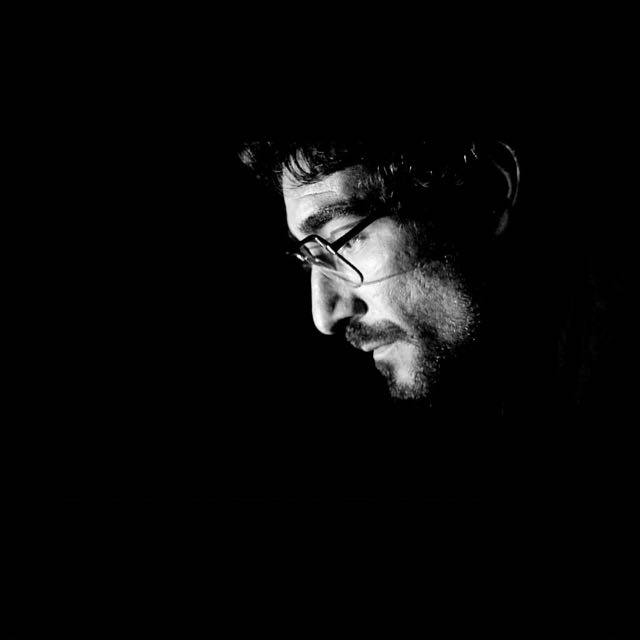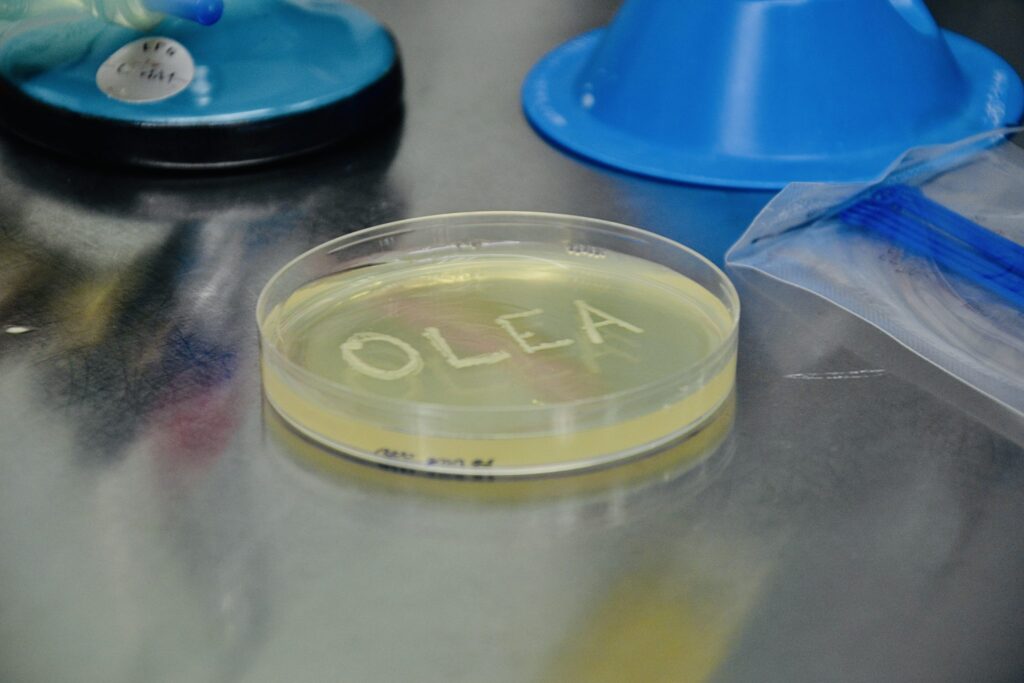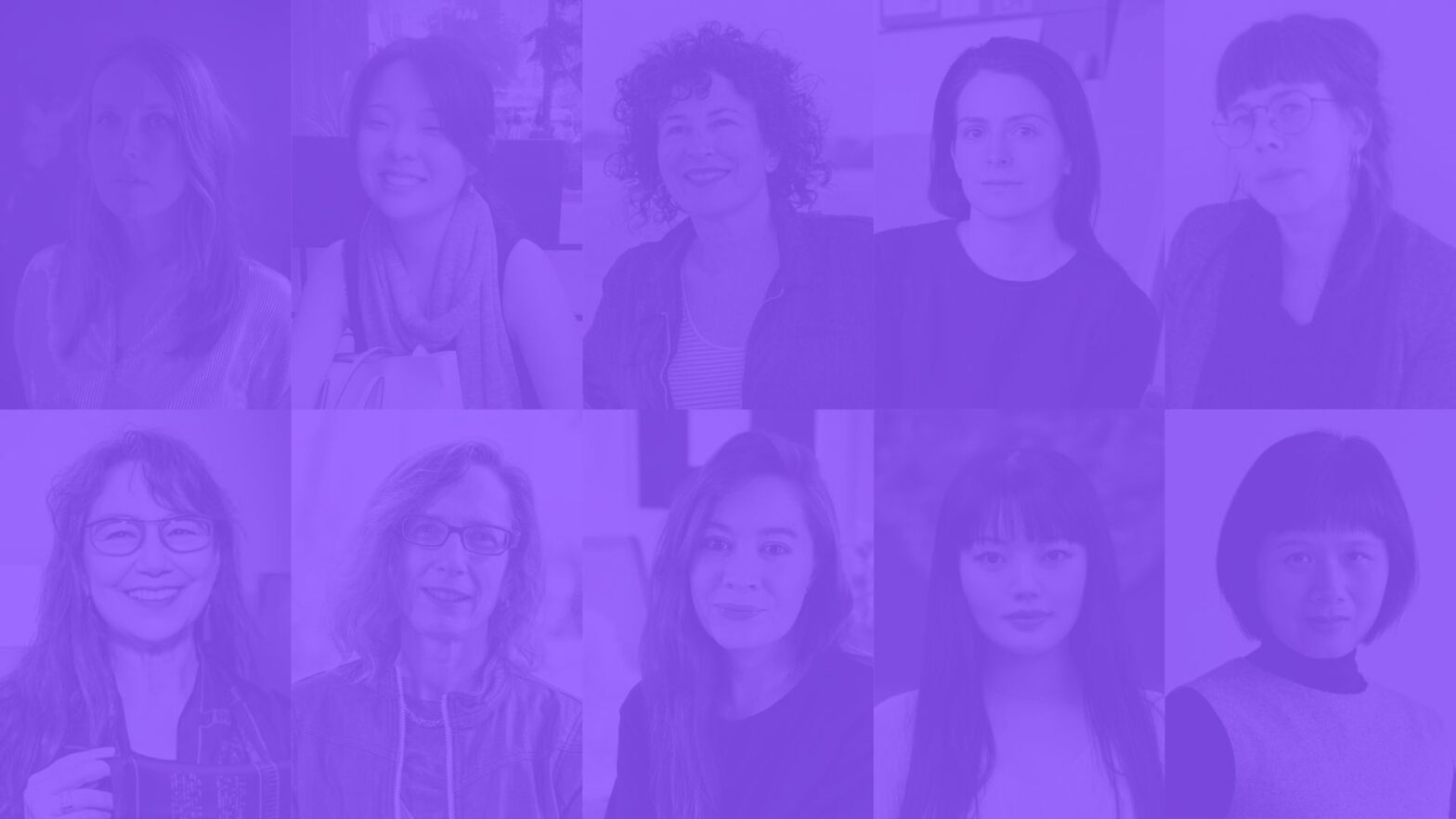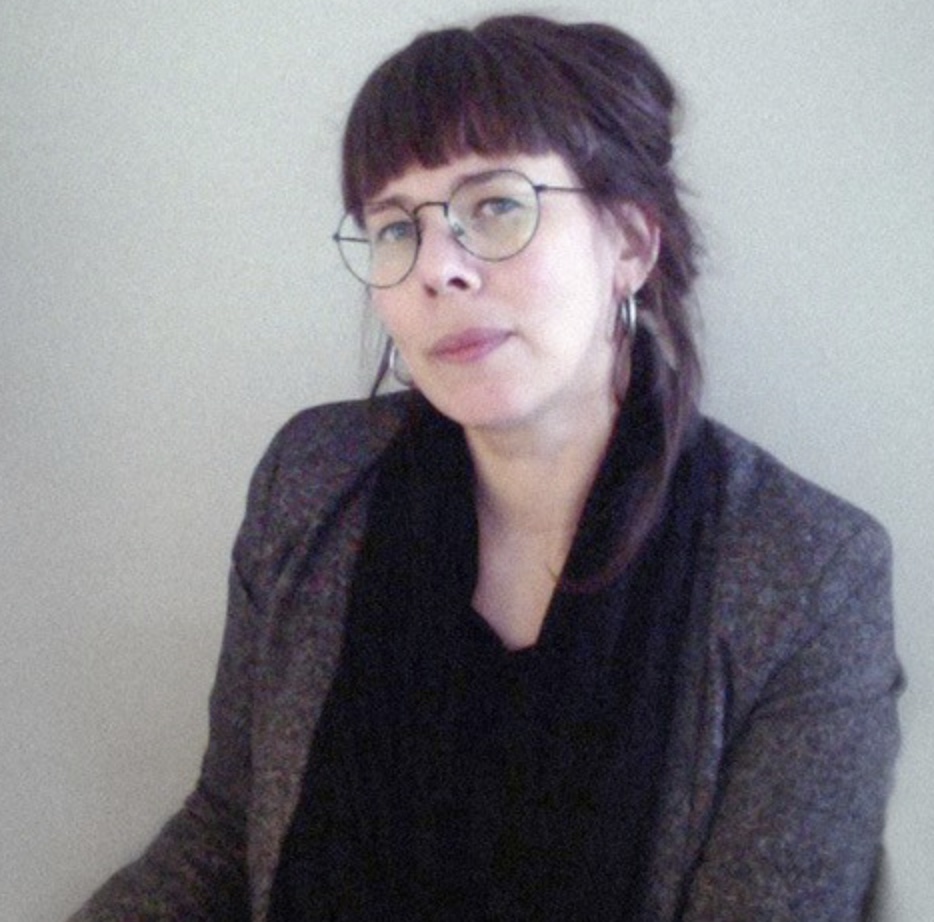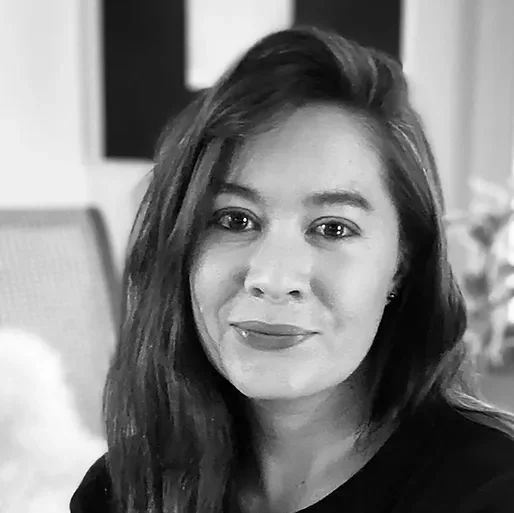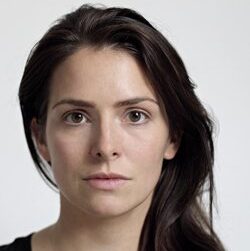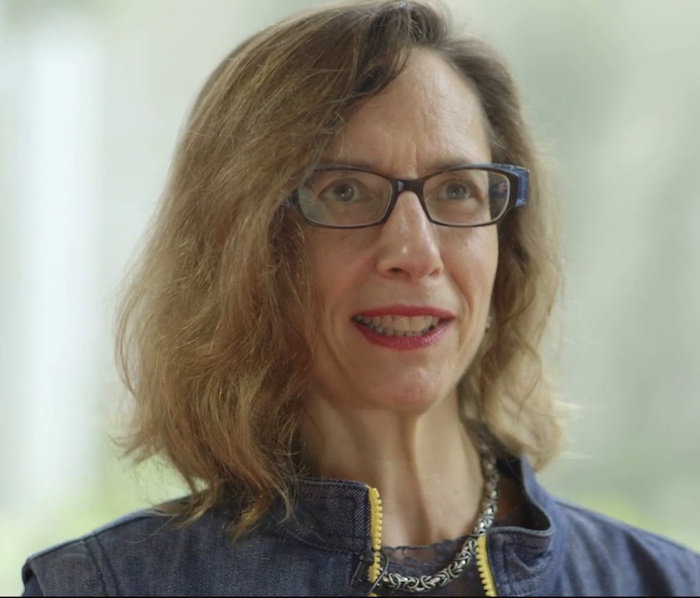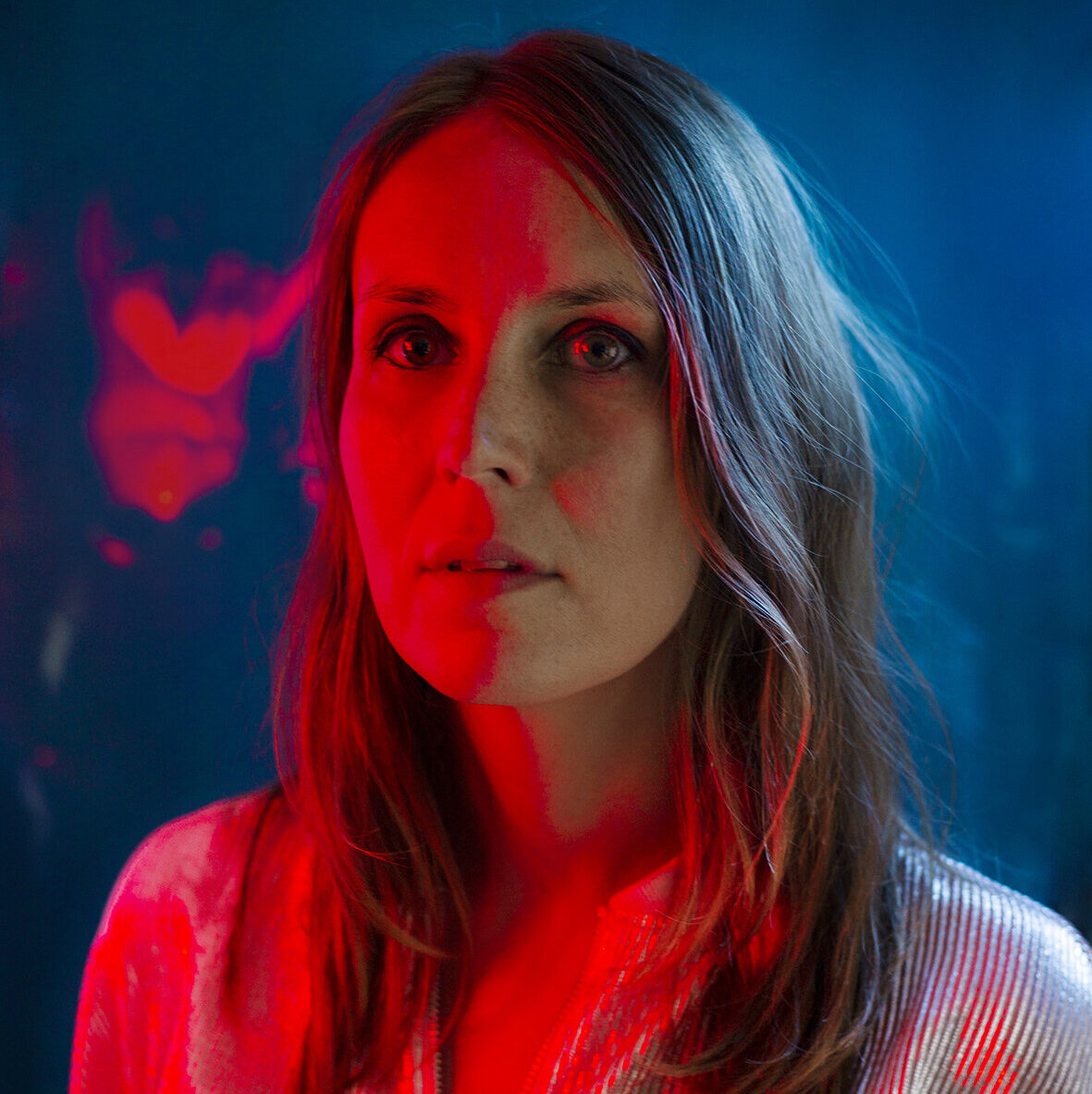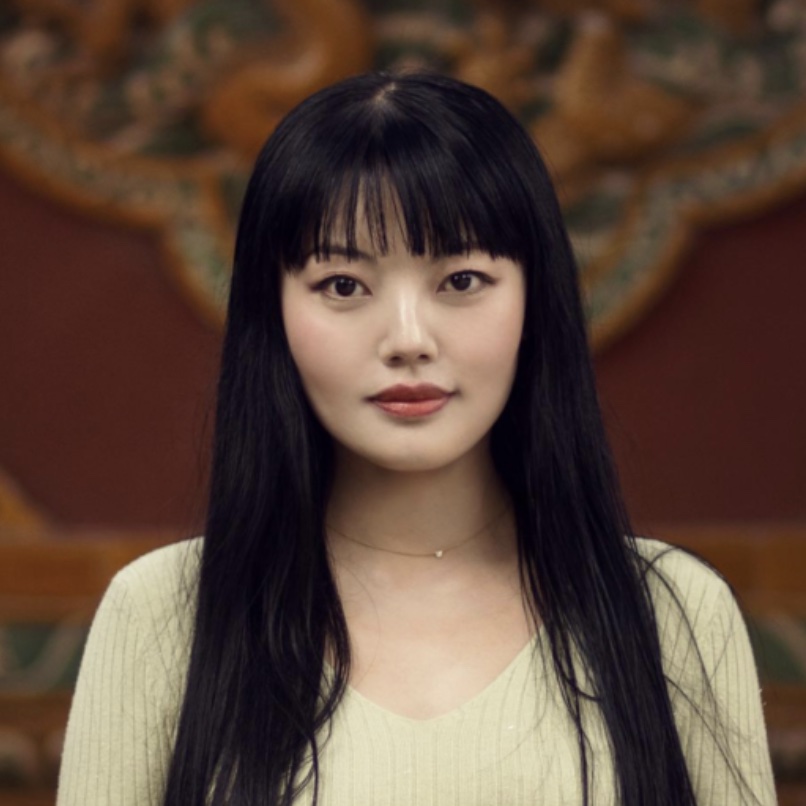Domenico Barra and Pau Waelder
DISØRDINARY BƏAUTY is an ongoing art project by Domenico Barra that explores ugliness through glitch art. The project has been developed as a series of NFTs, with a new phase taking place on Niio as a work in progress, in which the artist will periodically upload new artworks and accompanying documentation. Here in the Editorial section, we are publishing email exchanges bringing light into Domenico’s creative process and the ideas and influences behind this project.
Follow Domenico Barra’s work in progress on your screen in DISØRDINARY BƏAUTY: art canon
Domenico Barra, DB a̶r̶t̶ ̶c̶a̶n̶o̶n̶ | p̶o̶r̶t̶r̶a̶i̶t̶_̶g̶e̶n̶t̶l̶e̶m̶a̶n̶, 2023
Third ɛʍǟɨʟ exchange
from: Pau Waelder
to: Domenico Barra
date: Jul 26, 2023, 6:46 PM
subject: Re: Disordinary Beauty #03 on Niio
Hi, Domenico!
Again, work piles up and it is hard to keep up with everything!
I hope summer is going well despite the heatwaves, Barbenheimer and the overall craziness of the world (including the disorienting change of Twitter to X, is this the end of times?).
Ok, so I have a couple more questions (in attachment) that came to mind after watching your latest artwork, I hope you find them interesting.
Looking forward to your answers, take care and best wishes!
Pau
from: Domenico Barra
to: Pau Waelder
date: Jul 31, 2023, 4:43 PM
subject: Re: Disordinary Beauty #03 on Niio
Dear Pau,
We live in a society that demands us to be always busy even when we have nothing to do. We are online crafting content to SHARE we are not doing anything. We never take a break from doing, just for the sake of having always something to SHARE, it’s crazy. I think doing nothing is an act of rebellion. I am spending at least one hour per day on the reef by the sea only staring at the horizon.
I am glad you had the chance to have some quality free time, and I am happy it feels great. Creativity runs wild during those moments. Make sure you will have more of that, you won’t regret it.
Here below are my answers to your questions. I hope you will find interesting thoughts for your piece.
I wish you well and I look forward to reading your next email.
Sincerely,
d0/\/\!
This time we have a portrait by Caravaggio, no less. Some would say that using the work of such a great master is disrespectful, or that you might be using his fame to draw attention to your work. This also brings to mind the availability of these artworks in the public domain, for everyone to use, which is also our right, and the artists’ right, to build on the legacy of the culture we have inherited. How would you respond to this?
In the realm of the public domain, a critical landscape emerges, particularly in the era of AI-generated images and the resurgence of artists reclaiming their copyrights against the proliferation of their styles through text-to-image AI systems. While the focus here does not revolve around a living artist, one cannot ignore that those who might perceive my reinterpretation of Caravaggio’s work as disrespectful could be driven by a similar sentiment. “Do not copy other artists, if you are a real artist you should create your style signature”.
Read about the Electronic Frontier Foundation‘s take on Copyright and AI art
Drawing from a background deeply rooted in remix culture, I wholeheartedly support the open access to cultural content, advocating for its use to create something innovative and as a means of paying tribute and preserving legacies. This commitment forms the basis of my series, exclusively created for Niio, where my aim is to shed light on lesser-known artists and their works, fostering art literacy and cultural appreciation. As I did in this video where I picked a not so famous work by the Italian Great Master. My art strives to serve a cultural purpose, akin to remix culture, by presenting novel perspectives and reimagining traditional artworks. I make it a point to provide additional files and content alongside my creations on Niio, enabling people to download, use, and remix them.
“I make it a point to provide additional files and content alongside my creations on Niio, enabling people to download, use, and remix them.”
In this particular video featuring Caravaggio’s work “Portrait of a gentleman” (presumably Scipione Borghese), I intend to pay homage to the artist and his legendary narrative and legacy. My roots in Naples, Italy, and my current residence in Malta strengthen my connection to Caravaggio, whose presence has been an integral part of my cultural upbringing and daily life. The three masterpieces located in Napoli, namely “The Flagellation of Christ” at the Museo Nazionale di Capodimonte, “The Seven Works of Mercy” at Pio Monte della Misericordia, and “The Martyrdom of Saint Ursula” at Palazzo Piacentini, hold a special place of pride in my city’s history. These pieces have been an essential part of my childhood memories, instilling a sense of artistic bong and cultural appreciation. Upon moving to Malta, one of my first actions was to visit Caravaggio’s works, “The Beheading of St. John the Baptist” and “St. Jerome,” at the Oratory of the Co-Cathedral of St. John in Valletta. Their presence in my new home further deepened my connection to the artist.
In creating my art, I do not seek to copy Caravaggio’s style or exploit his fame and name. Rather, I endeavor to pay tribute not only to Caravaggio but also to other artists who have left a lasting impact on the art world. My series, titled DISØRDINARY BƏAUTY | a̶r̶t̶ ̶c̶a̶n̶o̶n̶s̶, showcases artworks that, in my opinion, stand out within their respective canons, either through their classical nature or innovative approach. Much like Caravaggio revolutionized art with his masterful use of Chiaroscuro, I aspire to bring fresh perspectives and novel experiences to the realm of art. I am humbled by the inspiration drawn from Caravaggio’s artistic persona, while fully acknowledging that I am not comparing myself to his immense talent.
“By encouraging accessibility to artistic and cultural content, we contribute to the richness of our collective heritage and enable a broader audience to engage with and appreciate art in its various forms.”
Embracing the principles of open access, be it Public Domain, Creative Commons, Copyleft, or copy-it-right, I firmly believe that such practices foster a healthier and more inclusive cultural environment. By encouraging accessibility to artistic and cultural content, we contribute to the richness of our collective heritage and enable a broader audience to engage with and appreciate art in its various forms.
Since a glitch is perceived as an error, some might understand glitch art as just randomly distorting the source material, without real agency in the outcome. But I see a methodical work and some aesthetic decisions. Can you take us through the process you have carried out to create this glitched portrait of Scipione Borghese?
The conventional perception of glitch = error has resulted in numerous misconceptions and misunderstandings of Glitch Art. However, this has also led to diverse artistic interpretations, hindering the establishment of a precise technical definition for Glitch Art, something I believe it kind of resulted into an opportunity for artists to explore different meanings and stories.
Notably, the lack of a direct translation for “glitch” in Italian and many other languages further adds complexity to its understanding. Instead, terms like “rumore” in Italian and “ruido” in Spanish were suggested, words mostly associated with sound, rather than visual anomalies. I still recall my grandmother calling me to check her TV because there was some rumore on the screen.

To rectify these misconceptions and align those with my glitch art experience, I emphasize in my classes and art presentations that glitches are not errors as if they were errors, we would have nothing as the machine would stop working; glitches are unexpected events, anomalies arising from deviations in standard functions, and instances where machines misbehave. These glitches can even be deliberately induced forcing the machine into glitching defying expectations and programmed exhibiting a level of controllability, while others emerge organically in the wild digital landscape. In post-production, we have the freedom to craft and edit our glitches as desired, opting for “natural glitches” or controlled variants, depending on their role within the semiotics of the artwork.
“We have the freedom to craft and edit our glitches as desired, opting for “natural glitches” or controlled variants, depending on their role within the semiotics of the artwork.”
In my current series for Niio, I adopt a dual approach, incorporating both databending and generative glitches. In the case of databending, I allow the glitches to unfold spontaneously, experimenting with various formats and video codecs, curating the most potent ones for later use in post-production. While I maintain some degree of control over these glitches, their behavior often surprises me, as different codecs interact distinctively due to variations in data arrangement standards. Conversely, generative glitches grant me more control; I can determine their appearance, speed, and intensity by modifying the script’s values.
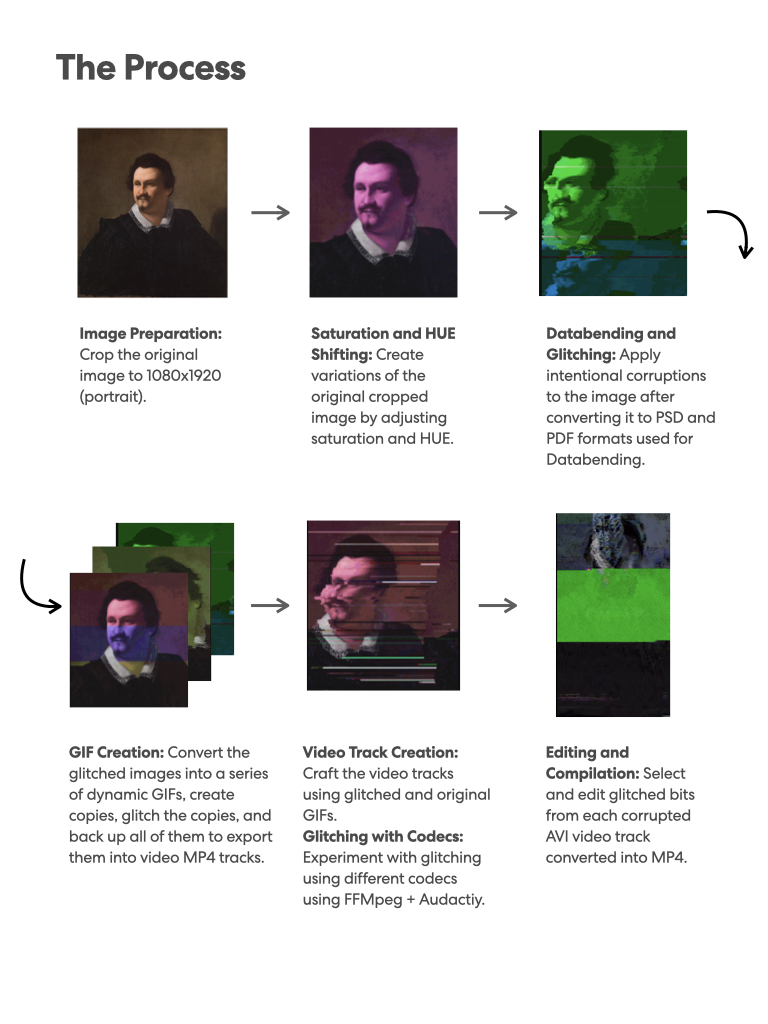
Creating each video segment exclusive to Niio in this series is a labor-intensive process, involving a dizzying cycle of coding and decoding, transitioning from one format to another, combining databending and generative glitching, rendering, and finally editing. For “DB a̶r̶t̶ ̶c̶a̶n̶o̶n̶ | p̶o̶r̶t̶r̶a̶i̶t̶_̶g̶e̶n̶t̶l̶e̶m̶a̶n̶” after Caravaggio, I opted for an even more challenging path. Initially, I rendered the original image in diverse hues and saturations, saving each frame for use in a gif. Subsequently, I glitched this gif using a hexadecimal software named Notepad ++. Both the unaltered and glitched gifs were then imported into a couple of generative glitch apps running in Processing and JAVA, where I live recorded some of the generative processes and effects, later glitching a few outcomes using Notepad ++.
“Creating each video segment is a labor-intensive process, involving a dizzying cycle of coding and decoding, transitioning from one format to another, combining databending and generative glitching, rendering, and finally editing.”
The video editing process for this artwork involved integrating approximately seven to eight gifs at this first stage of editing. One of this GIFs features an upward-breaking effect, the one you suggested is reminiscent of Francis Bacon’s style, achieved through generative means. To add further complexity, I introduced another glitch cycle by combining the original image and its various HUE versions in a PDF file with JPG encoding, subsequently glitching the PDF files using Databending in Notepad ++. Through this intricate process, I generated around 90 images, each then rendered into more gifs for additional Databending and generative glitching in Processing, yielding a considerable array of gifs for the final video editing.
Some of these files are available for download on Niio, and I have utilized them on social media to showcase the work in progress and announce the video’s release. The complexity of this process is a testament to the dedication and creativity poured into my glitch art, striving to challenge conventions and push artistic boundaries within the contemporary context.
A package of 14 files from the editing process is freely available to download from the artwork’s page on Niio.
Borghese was a famous collector, and supporter of Caravaggio and many other artists, who helped introduce the Baroque style in Italy. Was his role as an influential individual in the arts what led you to choose this portrait? It certainly does not depict a classical form of beauty, as the previous artworks in this series, but rather an image of power. How would you contextualize this work in your research on the canon of beauty?
In our society, few things are as captivating as the allure of power. The pursuit of a public and esteemed image of power becomes an undeniable canon to conform to, one that can elevate our perceived beauty in the eyes of the world. My decision to delve into this subject was motivated by various factors. Traditionally, portraits have centered around classic subjects such as muses (as seen in DB a̶r̶t̶ ̶c̶a̶n̶o̶n̶ | a̶ ̶b̶e̶a̶u̶t̶y̶ ̶i̶n̶ ̶v̶i̶o̶l̶e̶t̶ after Paul Quinsac) and self-portraits (explored in DB a̶r̶t̶ ̶c̶a̶n̶o̶n̶ | s̶e̶l̶f̶-̶p̶o̶r̶t̶r̶a̶i̶t̶ after Carl Joseph Begas). However, with this third artwork, I aim to shift the focus towards collectors.
Collectors, though often playing a quieter role in the art world show, have now risen to prominence, especially since the mainstream emergence of NFTs. In the digital art renaissance, they have become the true stars, the esteemed patrons fueling this transformative movement. Everyone, including myself with a diverse collection of digital art on blockchain platforms like Tezos, Near, and Ethereum, has embraced the role of a collector.
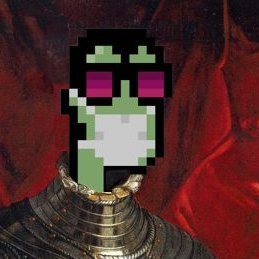
NFTs have transformed the digital art domain into an intricate role-playing game, where anonymity through nicknames adds an element of playfulness. We witness figures like Cozomo de Medici and the entire Medici dynasty virtually ruling the Web3 digital art arena. Here, the term “ruling” is not used lightly, as money, and by extension, wealth and influence which embody power, find particular significance within this game.
“In the digital art renaissance, collectors have become the true stars, the esteemed patrons fueling this transformative movement.”
Collectors have become the darlings of admiration, and collecting itself has evolved into a means of garnering adoration and building influential networks and status within the digital art scene Web3 industry, social media circles and various communities. It is an avenue to monetize one’s social and digital art capital. This work, DB a̶r̶t̶ ̶c̶a̶n̶o̶n̶ | p̶o̶r̶t̶r̶a̶i̶t̶_̶g̶e̶n̶t̶l̶e̶m̶a̶n̶ after Caravaggio, delves into the realm of art portraiture as a potent symbol of power, it delves into the captivating allure of power collectors have and the fascination it holds for us, reflecting the beauty and allure we attribute to those in positions of authority.
Drawing upon my experiences in Napoli, where several years ago I encountered two captivating exhibitions at the Museo di Capodimonte, the very same museum housing a Caravaggio masterpiece, I found myself immersed in the world of portraiture. The exhibitions titled Tiziano e il ritratto di corte da Raffaello ai Carracci featuring portraiture works by Tiziano and V.I.P. – Very Important Portraits featuring works by David LaChapelle provided a thought-provoking discourse on power, fame, and wealth, illustrating how these themes were portrayed through contemporary artistic aesthetics and the canons of their respective eras. These exhibitions deeply influenced my decision to explore the realm of portraits in several of my projects and collections.
“This work shines as a tribute to art collecting, a praise to visionary collectors, and also a mockery of power and portrait as a temple of power, let’s say.”
The selection of this specific work by Caravaggio was intentional, as it stands as a less popular piece by the Italian master. In this painting, Caravaggio exhibits a more conservative approach, juxtaposed with the often rebellious nature he is famous for, especially when it came to choosing the models for his painting scenes where he often preferred to pick common people from the streets. Here he conceded to some compromise and adhered to a more traditional style, and the subject of his portrait is nonetheless his patron, depicted in all of his authority and prestige. In my work I also disrupt that image, pushing its features to the extreme.

Lastly, I have cherished the captivating moments spent in Villa Borghese during my time in Rome, indulging in the tranquility of warm summer nights and immersing myself in the Borghese’s park, Collection and Museum. These places have had a profound impact on me as an art lover. Villa Borghese’s ambience exudes the essence of art’s beauty and power like few other places, leaving an indelible mark on my artistic journey.
This work shines as a tribute to art collecting, a praise to visionary collectors, and also a mockery of power and portrait as a temple of power, let’s say.

